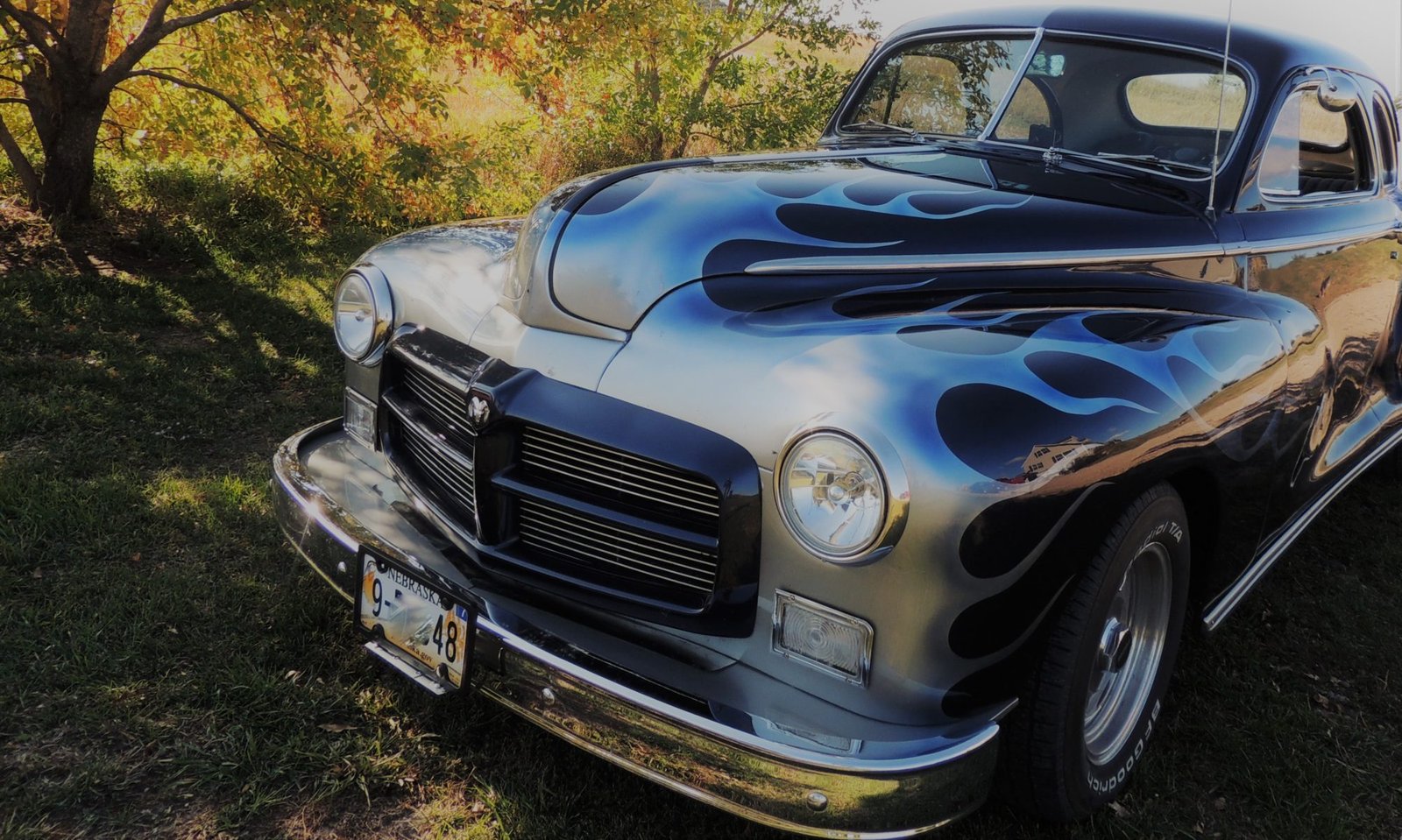
We attended a live auction over the weekend and have started unpacking just a few of the phenomenal finds. Starting at the lower right and moving clockwise, we have a 1956 Pontiac hood ornament, an early fifties Plymouth trunk ornament/license plate light, a skull and bones license plate frame, an original 1938 Chevy grille emblem, and a radiator cap made with the top of a ceremonial masonic staff. The remaining two items in the upper right corner are my two favorite finds of the day; the first is a piece of advertising for a 1949 Ford:

This mirror features a picture of a ’49 Ford above the words, “IT’S THE CAR OF THE YEAR!” I wondered who named it so since 1949 was the first year Motor Trend issued its Car of the Year award, and that went to the Cadillac. This is what I found:

The Ford was actually named the “Fashion Car of the Year” by the New York Fashion Academy, and the award was presented in conjunction with the Academy’s selection of America’s “Best Dressed Women.” That isn’t quite so impressive, but it’s still a neat mirror, and the subject of design is a good segue way to this hood ornament:

The lower part of the ornament was originally found on that fashion icon, the ’49 Ford. The lucite insert has been replaced by a chrome bird that was manufactured by Ray Russell Industries. Ray Russell was a Detroit industrial designer and engineer who had some far-out ideas and experimented with making cars out of various materials including plywood, plastic and aluminum. Among his best-known designs was an automobile called the Gadabout:


This aerodynamic roadster was made largely of aluminum and magnesium on a welded steel frame that completely encircled the car. Notice how strange a car looks without a grille. It reportedly weighed 1,100 pounds, and designer Russell claimed it would go 40 miles on a gallon of gas. In regard to propulsion:

Ford may have taken an interest and collaborated with Russell for a time as reported by Newsweek:

Ford officials apparently refused to comment when asked about it:

Russell also experimented with hood ornaments and add-ons for hood ornaments like the one we just bought. Below is the design patent for Russell’s bird. Notice the application was file in July of 1948, so perhaps he did have some sort of inside track at Ford.


For comparison, here is a stock ’49 Ford hood ornament, which resembles the top of a Roman centurion’s helmet, above the Ray Russell version.


Of course, you could always make the decision to go with no hood ornament at all (but do keep the grille)!






































































